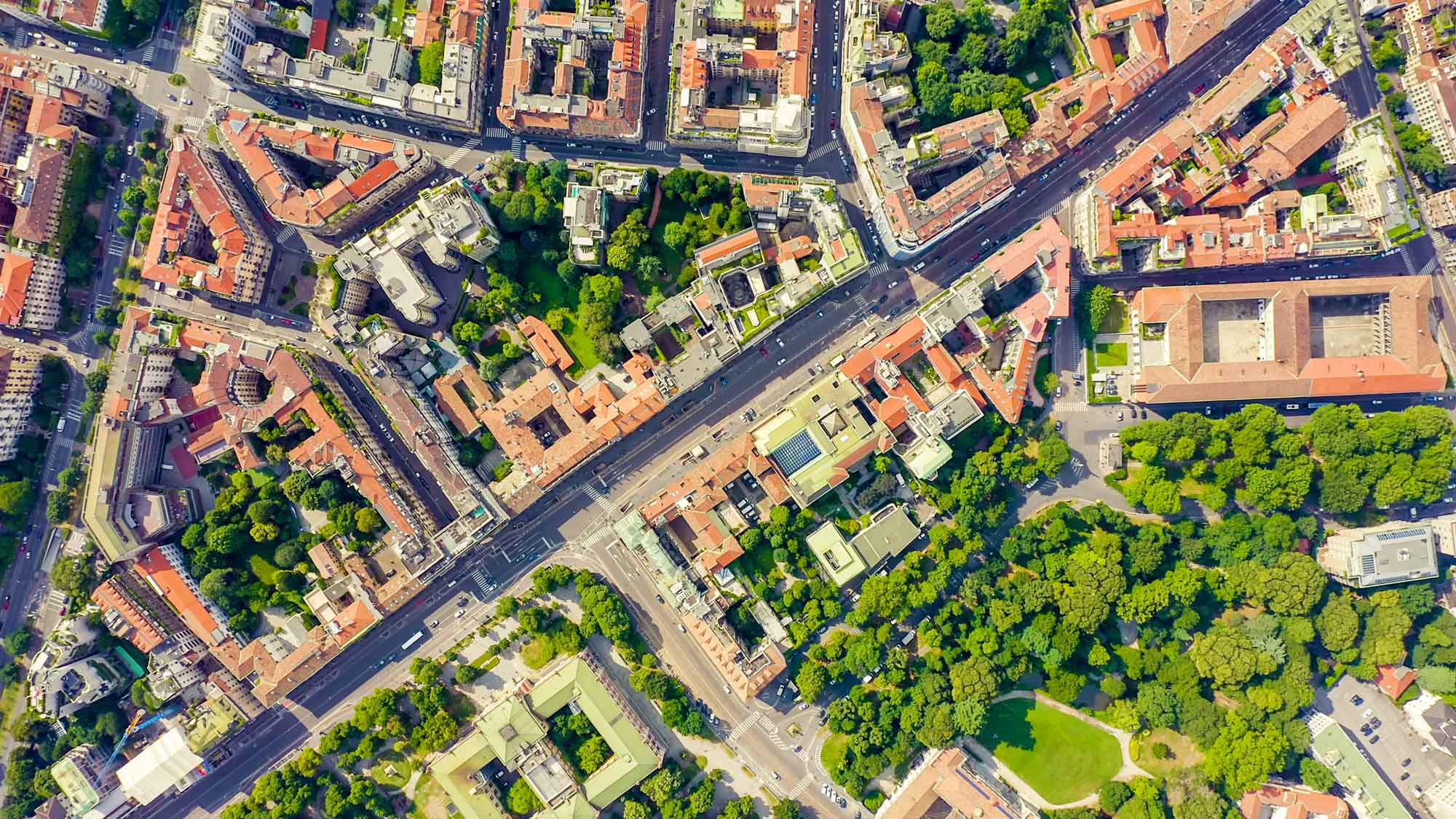Over half of the world population now lives in cities or population centres. In Europe, this figure is already at 75 %, and the trend is rising around the globe. Cities have a central role to play in the fight against the climate crisis. They cause about 70 % of global CO2-emissions and are responsible for an equally large share of global energy consumption.1 The impacts of climate change, such as air pollution, hot spells and extreme weather events, are particularly pronounced in urban areas.
At the same time, cities have tremendous potential to become pioneers in the area of climate protection and adaptation to climate change thanks to their roles as economic centres and sites for research, innovation and technology, making them a powerful force for driving economic, environmental and social change. Innovative solutions can be tested in urban spaces under real conditions as the basis for a wider roll-out. Strategies for decarbonising buildings and entire neighbourhoods, urban energy and mobility systems as well as industrial operations are critical for the transition to a resource-conserving, climate-neutral economy and way of life.
How can European cities achieve the goal of climate neutrality? Which instruments and activities must be supported? And what can other cities learn from the pioneers? The city of the future needs integrated, digital and circular solutions for buildings and transportation systems as well as supply and disposal infrastructure. In fact, many cities are already leading the way in climate protection and resource conservation, such as by planning and building positive energy districts, developing low-carbon transport systems or establishing an integrated waste and recycling system.
European and national strategies
The European mission “100 Climate-neutral Cities by 2030 – by and for the Citizens”2 has set the ambitious goal of helping large, medium and small European cities become climate-neutral by 2030. As fields for experimentation and innovation, these cities will demonstrate suitable strategies and measures, allowing them to serve as models for other European cities. The mission is making an important contribution to the European “Green Deal” and the EU’s commitment to achieving climate neutrality by 2050. National research priorities and programmes were oriented around the European mission early and created the necessary (learning) environment for the development and implementation of innovative solutions in Austrian cities. These included the RTI programmes “City of Tomorrow” and “Mobility of Tomorrow” run by the Federal Ministry for Climate Action, Environment, Energy, Mobility, Innovation and Technology (BMK) as well as the “Smart Cities Initiative” of the Climate and Energy Fund. In recent years, some cities and towns in Austria have developed “Smart City strategies” that help point the way to a climate-neutral future. Numerous initiatives in the area of research, technology and innovation (RTI) show how successful pilot projects can become trend-setters.
In this issue, we present a number of pioneering Austrian pro-jects and activities relating to the topic of the “climate-neutral city” that offer innovative concepts and solutions for urban spaces.
Mission “Climate-neutral City”
The Federal Ministry for Climate Action, Environment, Energy, Mobility, Innovation and Technology (BMK), in cooperation with the Climate and Energy Fund, has established the mission “Climate-neutral City” as a new, urban RTI focal point to drive forward the rapid implementation of climate goals in Austrian cities and municipalities. Extensive research activities and accompanying measures will act as “enablers” in the coming years and help identify suitable strategies. The goal is to rapidly develop practical solutions in the mobility and energy sectors and to apply the principles of circular economy as widely and effectively as possible.
The national mission “Climate-neutral City” follows directly on the preparations from the previous “Fit4Urban Mission”. The nine largest Austrian cities and urban regions received assistance in building up the knowledge required to move towards climate neutrality and in developing strategies for implementation measures, especially in the energy and mobility sectors. As part of the “Pioneer City – Partnership for Climate-Neutral Cities 2030” call, public-public cooperation agreements are now being concluded with ten Austrian pioneer cities. These cities agree to focus their municipal governance on achieving climate neutrality by 2030 and to begin initial implementations in at least one climate-neutral pilot district. The cities are also called upon to bring additional climate neutrality concepts to fruition already before 2040. The pioneering cities will serve as a learning environment to demonstrate the effectiveness of solution components that can be adopted by other cities as well. The goal is to build up a wealth of experience that will simplify the eventual path to climate neutrality for all cities and municipalities in Austria.
Custom solutions
Many of the national and international activities in the coming years will also be oriented around the needs of the pioneering cities. This work will be accompanied by extensive parallel support activities to provide effective and targeted assistance to Austrian cities on the path to climate neutrality. The funding programmes will be expanded in future to smaller cities with 10,000 to 50,000 residents. These cities can develop their own solutions to meet the needs of specific target groups or take up the results from the RTI projects of the pioneering cities and adapt them to their local conditions. Corresponding projects for smaller cities will be supported within the framework of the “Smart Cities initiative” of the Climate and Energy Fund.
nachhaltigwirtschaften.at/en/sdz/topics/mission-climate-neutral-city.php
smartcities.at/en
1 www.climate-kic.org/wp-content/uploads/2022/05/DRAFT-D13.1-Report-on-city-needs-drivers-and-barriers-towards-climate-neutrality.pdf
2 research-and-innovation.ec.europa.eu/knowledge-publications-tools-and-data/publications/all-publications/100-climate-neutral-cities-2030-and-citizens_en




